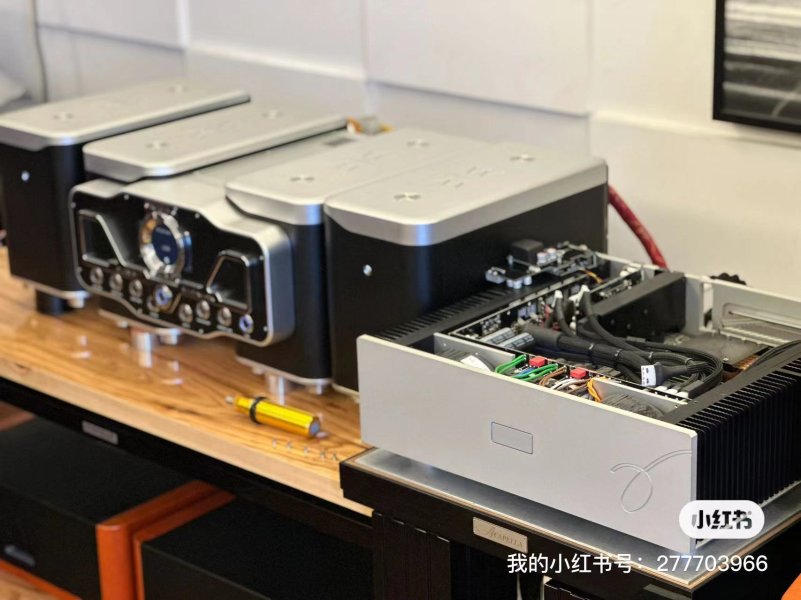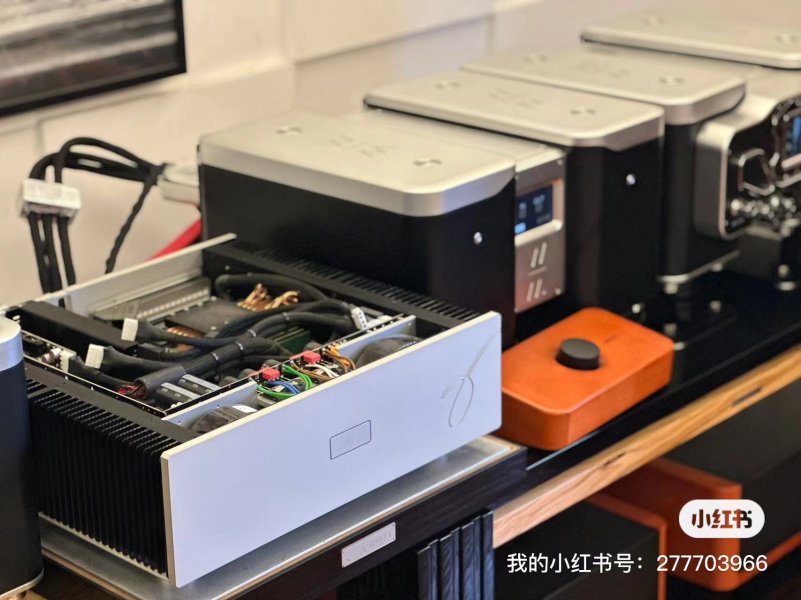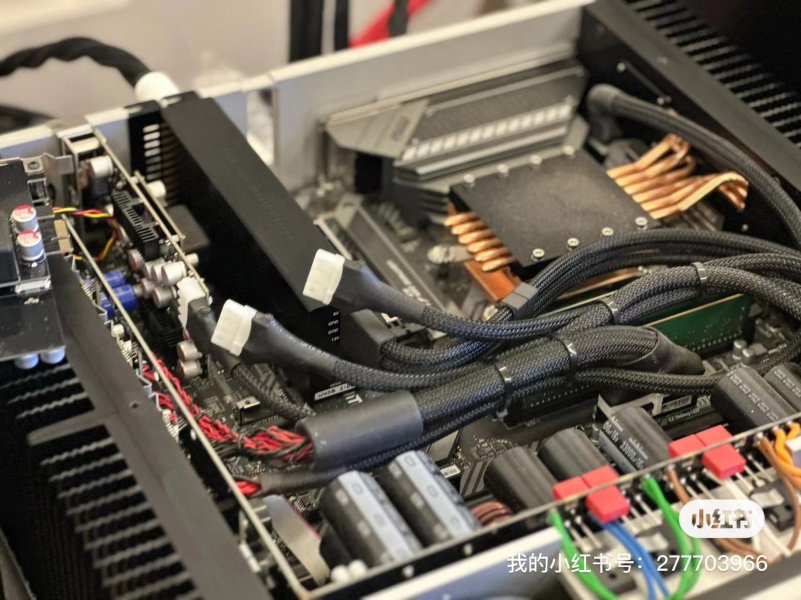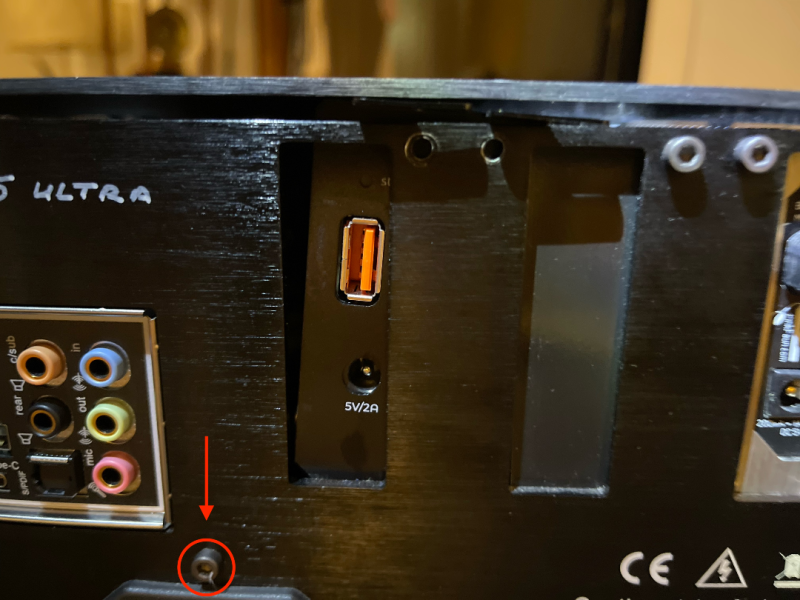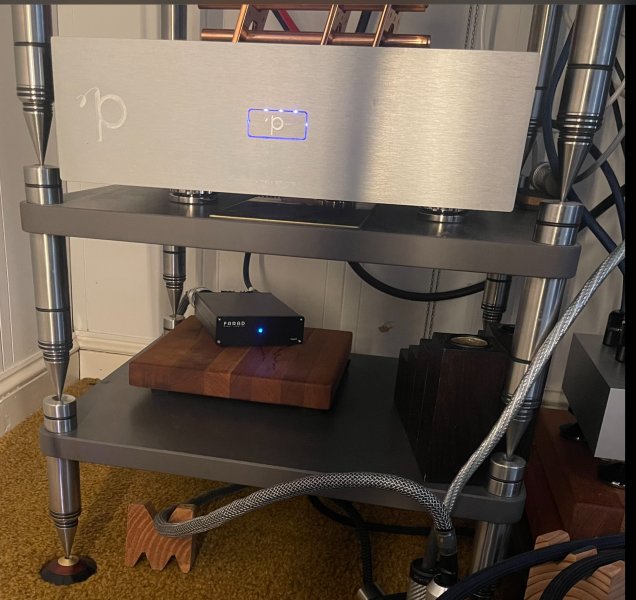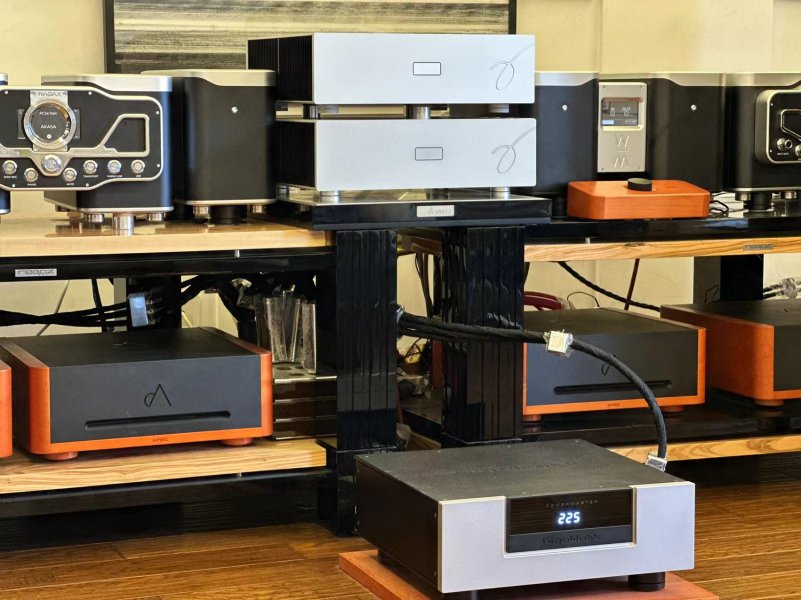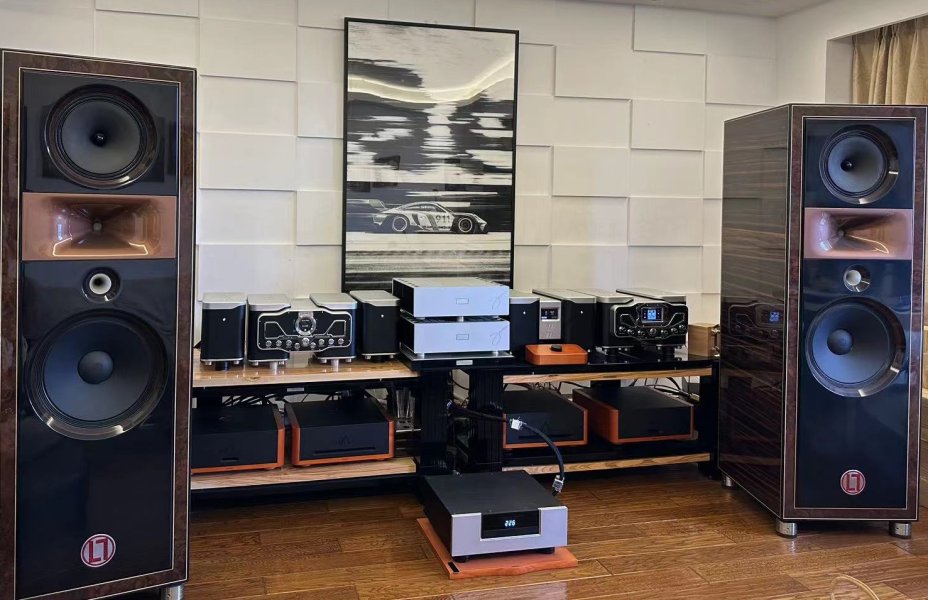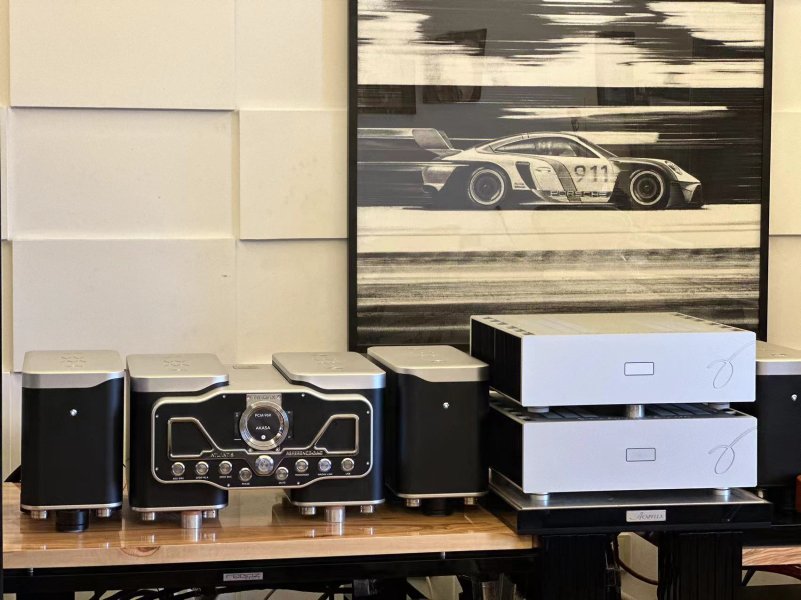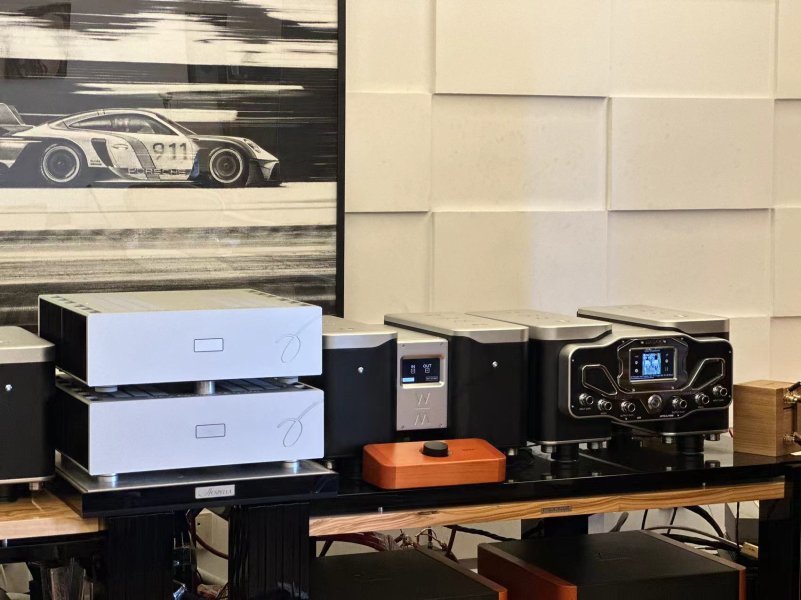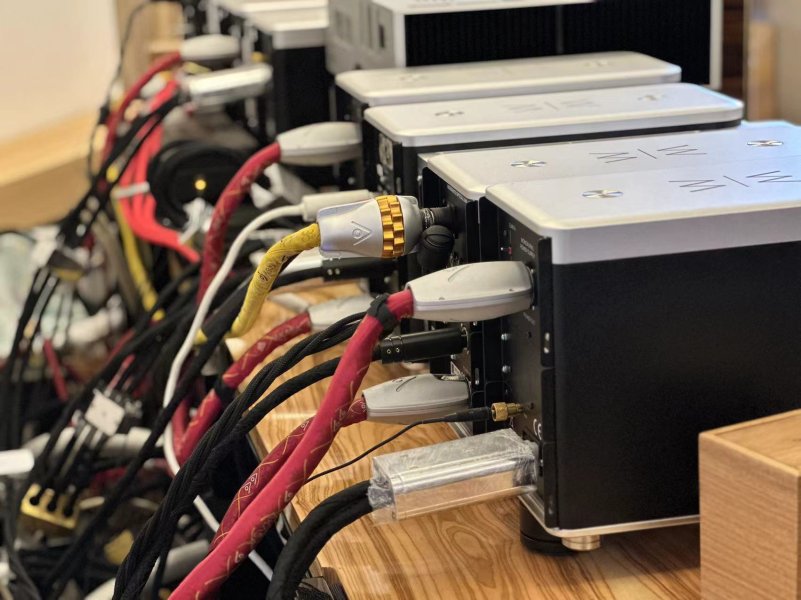...cont.
Kristian Bezuidenhout plays a mean Beethoven Piano Concerto 4 in G. The recording on Harmonia Mundi with Pablo Heras-Casado is outstanding. The dynamics in the second and third movements is a good test for any system. Whether a system can populate the size of that space while maintaining control during these dynamic swings is a good test. With the v2 USB card, I get the fullness of the strings and tympanis but in comparison with the Ultra card, the lower mids and bass are not as clearly resolved. It’s clearly the same family of sound with good details and texture, just less focused. The bass looser with the v2 but I think ultimately it’s still enjoyable in classical music. The double bass sounds fill up the room. Piano is less punchy more sweet. An acceptable outcome and pleasing but overall not as natural as with the Ultra card.

In this recording, Bezuidenhout plays a Conrad Graf piano. This is a period piano, around the time of and familiar to Beethoven, with a sound that is “heavier, less tinkling, and shifted in the direction of the modern piano” (Wikipedia) compared to period pianos which sounded more like harpsichords. I like the sound of this and when played through the v2 and Ultra card, both presents differently. Sweeter and fatter sounding action with the v2, tighter and sharper with the Ultra like the hammer felt pads have changed. I feel the Ultra is more natural and true to the sound but both are valid interpretations of the piece.
My next finding is with a Horowitz piece, the Schubert Impromptu No.3, Op90. I watched his Vienna performance in 1987 on Youtube which I cannot find on CD nor streaming. So I downloaded the clip
of his performance and extracted the MP3 from it. The strange thing for this is half way through the piece, a church bell starts ringing. Probably it’s the St. Stephen’s Cathedral, Pummerin Bell which is around 800m away from the Musikverein Golden Hall where the piece was recorded. With the Ultra, the bells are clear, even the decay and echos are laid out clearly, almost as loud as the piano playing in some parts. This piano piece has low bass notes that, along with Horowitz’s pedal actions, is easy to sound muddled up. Not so with the Ultra card, those notes are clear and the texture of the piano bass strings are clear to hear. With the v2 card the piece still sounded excellent, but the bell is less defined, piano bass trills are slightly muddled.
One Snowy White track I like is the Blues is the Road (Remastered) on Tidal. On the v2 card the track sound great. Images are tight and focused. Bass taut, electric guitar exciting and energetic without being harsh. Switching to the Ultra card and suddenly, the cymbals at the beginning are that much more natural and real sounding. The already tight images are a clearer in space and Terence’s vocals are uncannily real. A great recording becomes just that much better. An example of a pop/rock track sounding natural, yup it can be so.

The same 3 character points I mentioned above are true for all tracks I listen to during my comparisons. For some just a little different but for others the changes are pretty obvious. Natural, tighter lower-mid/bass and tighter imaging.
The Ultra USB card has a Molex connector at the back. And since it comes with a well made Molex cable, I suppose Pink Faun wanted one to try using the internal power as well. For the longest time, I had (and still have) the belief that the quality of power to the last device prior to the DAC is critical. So for many years I have been working hard to prepare the very best DC supply I could muster for my chosen bridge USB or any other bridge, as an external supply. It’s always a good idea to have a quality DC supply handy as so many audiophile devices need them eventually. for me, it’s a keeper device in hifi.
So I have collected a few Paul Hynes, double regulated DR7t DC rails. One of them is made of teflon, with z-foil resistors and is regarded as the best ever made by Paul especially the latest incarnation with the teflon daughter boards incorporated into the main teflon board. All the tests above were made with this 5V/10A DR7tTef power supply.
When I compared this external supply with the internal Molex supply to the Ultra USB Card, I was expecting a significant difference in sound quality. Not so! The Ultra USB bridge powered internally sounded sweet, detailed and controlled. I would be happy to use this. For the ultimate nit picking, it its still a small step lower than the sound with the DR7tTef which provides more bass control and real sounds of minor details. Like in the Horowitz Schubert track mentioned above, the church bells are audibly more real and clear with the DR7tTef. But the molex internal power is smoother and a touch sweeter to listen to. Perhaps I need to add more output capacitors to my Paul Hynes rail to up it’s game. With the Snowy White track, the internal Molex power sounds so good. Without PH side by side to compare, the Ultra with molex power is already clearly a step forward from v2. I’m going to leave the internal molex cable connected even when I will be using the DR7tTef and switch between them for further trials. This is easy to do since the Ultra USB bridge switches power automatically when an external supply is plugged in or taken out. The super capacitors continue to work normally despite the disruption of power.
With the Snowy White track, the internal Molex power sounds so good. Without PH side by side to compare, the Ultra with molex power is already clearly a step forward from v2. I’m going to leave the internal molex cable connected even when I will be using the DR7tTef and switch between them for further trials. This is easy to do since the Ultra USB bridge switches power automatically when an external supply is plugged in or taken out. The super capacitors continue to work normally despite the disruption of power.
The internal molex connected supply sounding good is a significant point as the preparation of a quality external DC supply is not trivial in effort nor cost. My Paul Hynes rails and it’s wired connections cost far more than the Ultra USB Card - so if the sound is already that good with just the internal molex supply, perhaps for many this will already be good enough. The last time I used the internal molex supply was with the v1/OCXO card before my DR7tTef was completed. When I eventually switched, there was a clear step up in sound quality going to external power as I had expected. Given that this time the jump in sound quality isn’t nearly as large, it seems to suggest the new power system in the Ultra USB card is doing a good job even when powered internally.
As for value, the Ultra USB card is not cheap at €3250. It clearly offers better sound but at many times the price of the v2 card, is it worth it? For me it's a yes! Until recently my v2 is already performing at such a high level and I was very happy with its sound. However, having heard the Ultra and experienced the added emotional connection to the music through the card, I won’t be going back to the v2 anytime soon. With the added advantage of using internal molex power supply without the need to an expensive external supply, I wonder if the high sound quality can be achieved using the Ultra card with a lower cost DIY PC? Difficult to know as Pink Faun is initially selling Ultra USB cards to users of Pink Faun streamers initially. Who knows, things change over time.
Recently alongside many new USB offerings on the market and new esoteric connection formats, with this new Ultra USB bridge I think that Pink Faun has proven that the USB standard can offer, not a baby step but quite a leap of next level performance and this surely makes it the King of USB bridges today. I will continue to try other USB cards as they come my way but for now, I look forward to spending time with it and rediscovering my entire collection of music for new insights.
Regards to all, Kin
Kristian Bezuidenhout plays a mean Beethoven Piano Concerto 4 in G. The recording on Harmonia Mundi with Pablo Heras-Casado is outstanding. The dynamics in the second and third movements is a good test for any system. Whether a system can populate the size of that space while maintaining control during these dynamic swings is a good test. With the v2 USB card, I get the fullness of the strings and tympanis but in comparison with the Ultra card, the lower mids and bass are not as clearly resolved. It’s clearly the same family of sound with good details and texture, just less focused. The bass looser with the v2 but I think ultimately it’s still enjoyable in classical music. The double bass sounds fill up the room. Piano is less punchy more sweet. An acceptable outcome and pleasing but overall not as natural as with the Ultra card.

In this recording, Bezuidenhout plays a Conrad Graf piano. This is a period piano, around the time of and familiar to Beethoven, with a sound that is “heavier, less tinkling, and shifted in the direction of the modern piano” (Wikipedia) compared to period pianos which sounded more like harpsichords. I like the sound of this and when played through the v2 and Ultra card, both presents differently. Sweeter and fatter sounding action with the v2, tighter and sharper with the Ultra like the hammer felt pads have changed. I feel the Ultra is more natural and true to the sound but both are valid interpretations of the piece.
My next finding is with a Horowitz piece, the Schubert Impromptu No.3, Op90. I watched his Vienna performance in 1987 on Youtube which I cannot find on CD nor streaming. So I downloaded the clip
of his performance and extracted the MP3 from it. The strange thing for this is half way through the piece, a church bell starts ringing. Probably it’s the St. Stephen’s Cathedral, Pummerin Bell which is around 800m away from the Musikverein Golden Hall where the piece was recorded. With the Ultra, the bells are clear, even the decay and echos are laid out clearly, almost as loud as the piano playing in some parts. This piano piece has low bass notes that, along with Horowitz’s pedal actions, is easy to sound muddled up. Not so with the Ultra card, those notes are clear and the texture of the piano bass strings are clear to hear. With the v2 card the piece still sounded excellent, but the bell is less defined, piano bass trills are slightly muddled.
One Snowy White track I like is the Blues is the Road (Remastered) on Tidal. On the v2 card the track sound great. Images are tight and focused. Bass taut, electric guitar exciting and energetic without being harsh. Switching to the Ultra card and suddenly, the cymbals at the beginning are that much more natural and real sounding. The already tight images are a clearer in space and Terence’s vocals are uncannily real. A great recording becomes just that much better. An example of a pop/rock track sounding natural, yup it can be so.

The same 3 character points I mentioned above are true for all tracks I listen to during my comparisons. For some just a little different but for others the changes are pretty obvious. Natural, tighter lower-mid/bass and tighter imaging.
The Ultra USB card has a Molex connector at the back. And since it comes with a well made Molex cable, I suppose Pink Faun wanted one to try using the internal power as well. For the longest time, I had (and still have) the belief that the quality of power to the last device prior to the DAC is critical. So for many years I have been working hard to prepare the very best DC supply I could muster for my chosen bridge USB or any other bridge, as an external supply. It’s always a good idea to have a quality DC supply handy as so many audiophile devices need them eventually. for me, it’s a keeper device in hifi.
So I have collected a few Paul Hynes, double regulated DR7t DC rails. One of them is made of teflon, with z-foil resistors and is regarded as the best ever made by Paul especially the latest incarnation with the teflon daughter boards incorporated into the main teflon board. All the tests above were made with this 5V/10A DR7tTef power supply.
When I compared this external supply with the internal Molex supply to the Ultra USB Card, I was expecting a significant difference in sound quality. Not so! The Ultra USB bridge powered internally sounded sweet, detailed and controlled. I would be happy to use this. For the ultimate nit picking, it its still a small step lower than the sound with the DR7tTef which provides more bass control and real sounds of minor details. Like in the Horowitz Schubert track mentioned above, the church bells are audibly more real and clear with the DR7tTef. But the molex internal power is smoother and a touch sweeter to listen to. Perhaps I need to add more output capacitors to my Paul Hynes rail to up it’s game.
The internal molex connected supply sounding good is a significant point as the preparation of a quality external DC supply is not trivial in effort nor cost. My Paul Hynes rails and it’s wired connections cost far more than the Ultra USB Card - so if the sound is already that good with just the internal molex supply, perhaps for many this will already be good enough. The last time I used the internal molex supply was with the v1/OCXO card before my DR7tTef was completed. When I eventually switched, there was a clear step up in sound quality going to external power as I had expected. Given that this time the jump in sound quality isn’t nearly as large, it seems to suggest the new power system in the Ultra USB card is doing a good job even when powered internally.
As for value, the Ultra USB card is not cheap at €3250. It clearly offers better sound but at many times the price of the v2 card, is it worth it? For me it's a yes! Until recently my v2 is already performing at such a high level and I was very happy with its sound. However, having heard the Ultra and experienced the added emotional connection to the music through the card, I won’t be going back to the v2 anytime soon. With the added advantage of using internal molex power supply without the need to an expensive external supply, I wonder if the high sound quality can be achieved using the Ultra card with a lower cost DIY PC? Difficult to know as Pink Faun is initially selling Ultra USB cards to users of Pink Faun streamers initially. Who knows, things change over time.
Recently alongside many new USB offerings on the market and new esoteric connection formats, with this new Ultra USB bridge I think that Pink Faun has proven that the USB standard can offer, not a baby step but quite a leap of next level performance and this surely makes it the King of USB bridges today. I will continue to try other USB cards as they come my way but for now, I look forward to spending time with it and rediscovering my entire collection of music for new insights.
Regards to all, Kin
Last edited:


